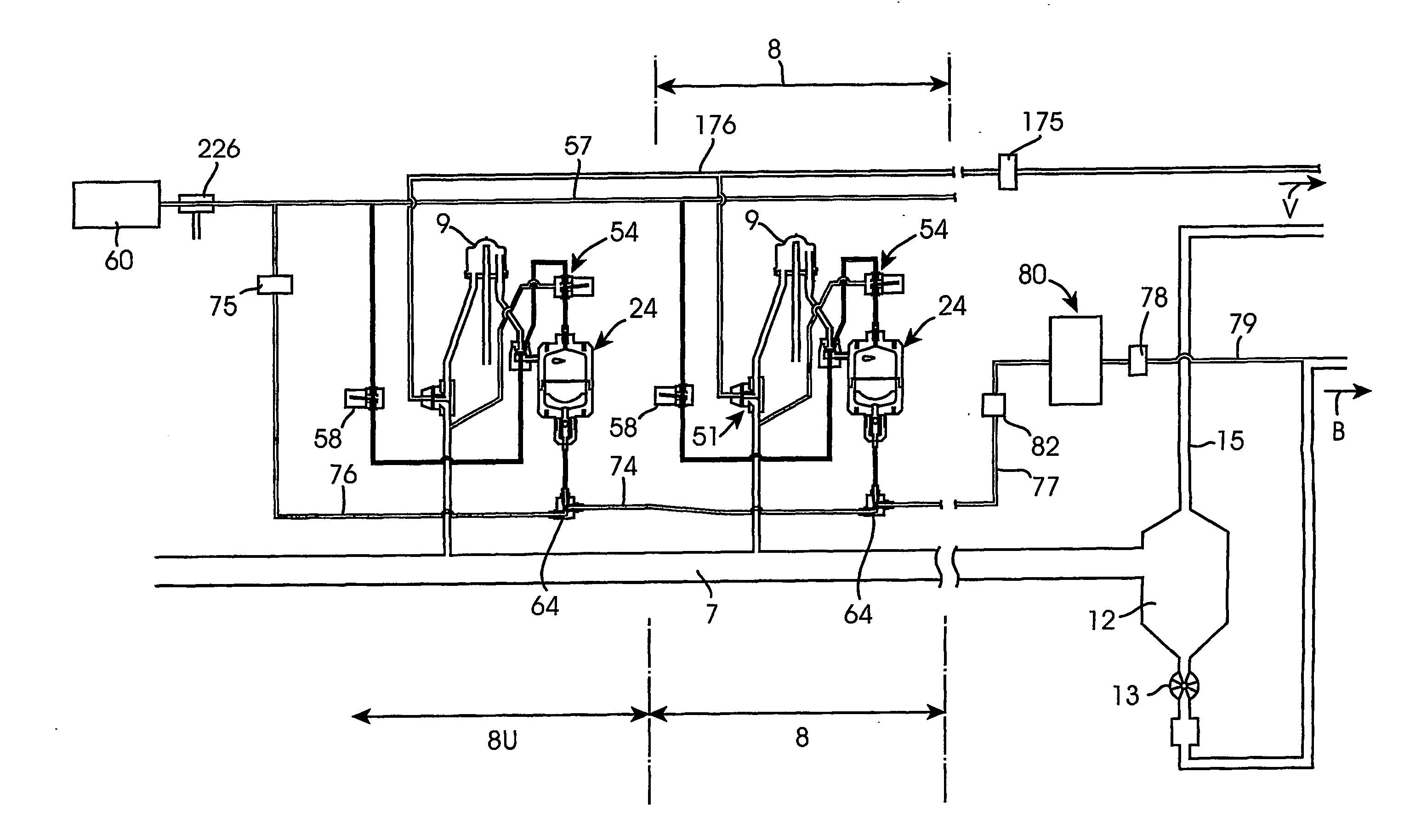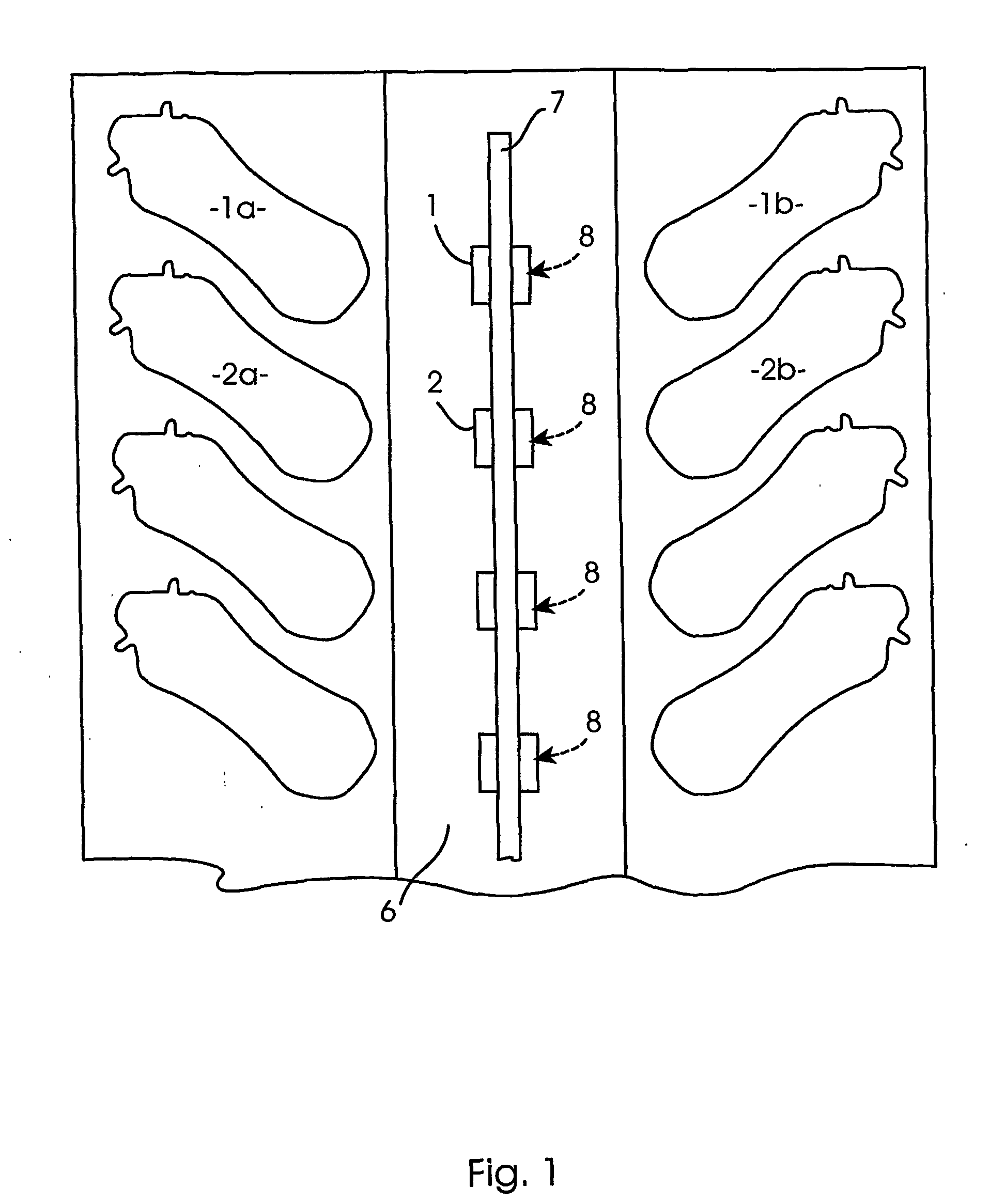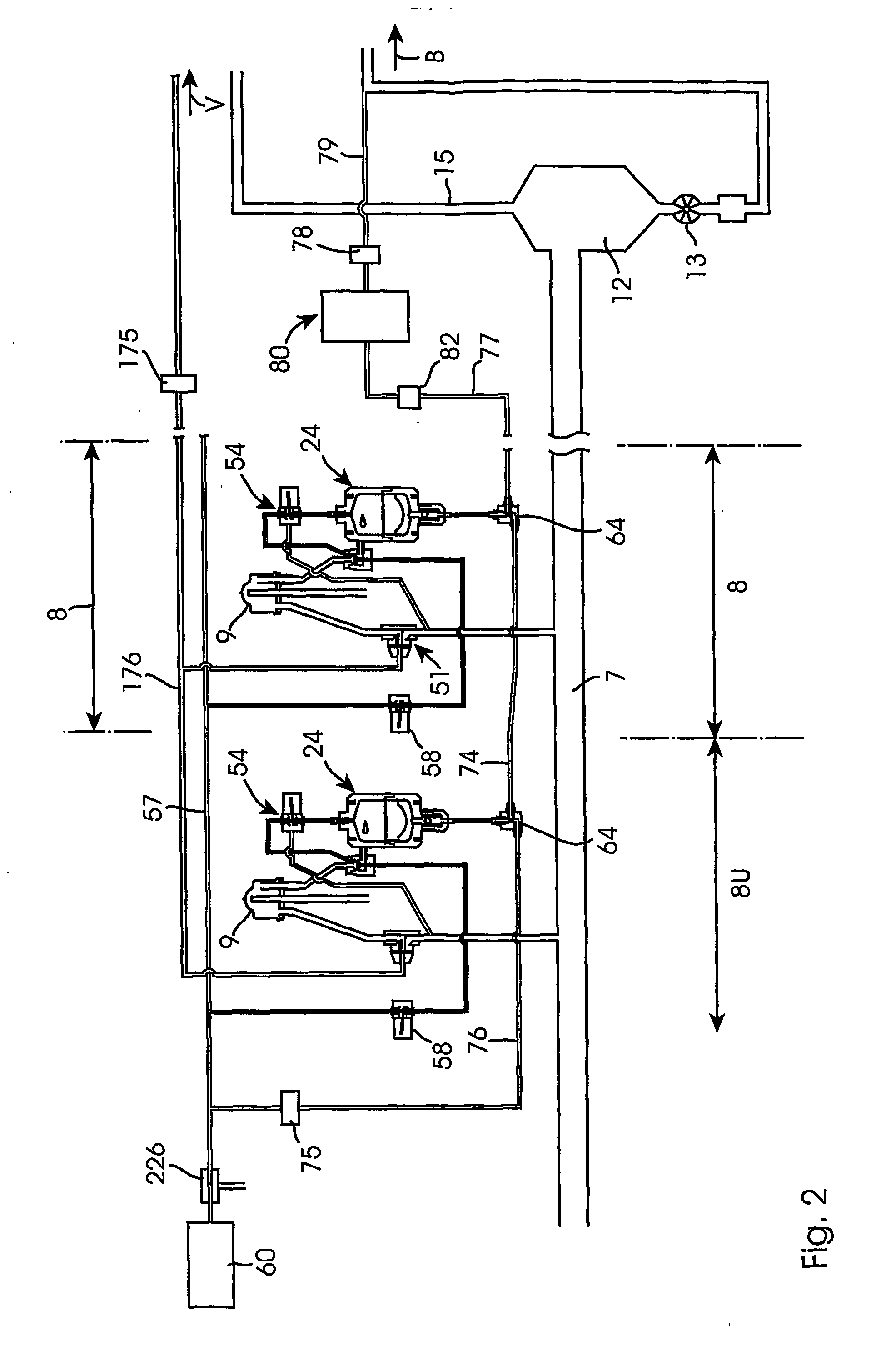Milk sampling and testing
a technology for applied in the field of milk sampling and testing, can solve the problems of more elaborate and expensive devices for electronic milk metering, substantial addition to workload, etc., and achieve the effect of less manual handling and convenient cleaning of the apparatus
- Summary
- Abstract
- Description
- Claims
- Application Information
AI Technical Summary
Benefits of technology
Problems solved by technology
Method used
Image
Examples
example 1
[0242] A herd consists of 120 cows in milk. In this example they will be referred to by number as cow no 1, cow no 2, and so on. It is assumed that no cow is already know to have mastitis—or that any cow already known to have mastitis has been temporarily excluded for treatment. During each milking a small sample (which in itself is a subsample) of milk from each cow (for example 5 ml) is taken and placed in a vial. The remainder of the cow's milk goes into the bulk tank awaiting collection.
[0243] Following milking, smaller subsamples are taken from every sample collected, mixed together, and tested for amyloid A. If none is detected (more precisely, the concentration of amyloid A is below a chosen threshold value) the rest of the sample milk is discarded. If mastitis is already known to be present, this single test could be applied to mixed milk of all cows which appeared to be mastitis-free at the last milking, so as to check for any new incidence of mastitis.
[0244] If amyloid A...
example 2
[0261] This example is similar to Example 1, but a more complex procedure allows the total number of stages of tests to be reduced further, if there is only one incidence of mastitis. As in Example 1, samples are taken at each milking and combined subsamples are mixed and tested to check whether there is any new incidence of mastitis.
[0262] Again it will be assumed that cow no 48 has a new incidence of mastitis.
[0263] In the first stage of testing there is division into a collection of first subsets which overlap. As shown diagrammatically in FIG. 2a, small equal subsamples are taken out of the vials containing milk from cows 1 to 45 and mixed together in a vial labelled A. Likewise, small subsamples are also taken out of the vials of milk collected from cows 31 to 75 and mixed in a vial labelled B, while milk from cows 61 to 105 is mixed in a vial labelled C. Also, milk from cows 91 to 120 plus cows 1 to 15 is mixed in a vial labelled D. Thus at this stage there are four vials A,...
example 3
[0275] This example uses a procedure which defines more than one collection of subsets of the whole herd.
[0276] A herd consists of 64 cows in milk. As in Example 1, after each milking, mixed milk is subjected to a routine test for amyloid A to detect any new incidence of mastitis. This routine test may be a single test on a mixture of milk from all cows, or it may be the testing of eight first subsets in the first stage of the procedure described below.
[0277] It will again be assumed that cow no 48 has an incidence of mastitis.
[0278] The sample vials of milk are arranged in a square array as shown in FIG. 3 of the drawings. Small equal subsamples are taken out of the vials containing milk from cows 1 to 8 and mixed together in a vial designated R1. Likewise, small subsamples are also taken out of the vials of milk collected from cows 9 to 16 and mixed in a vial designated R2, and so on up to vial R8 containing subsamples of milk from cows 57 to 64. As can be seen in FIG. 3, this ...
PUM
 Login to View More
Login to View More Abstract
Description
Claims
Application Information
 Login to View More
Login to View More - R&D
- Intellectual Property
- Life Sciences
- Materials
- Tech Scout
- Unparalleled Data Quality
- Higher Quality Content
- 60% Fewer Hallucinations
Browse by: Latest US Patents, China's latest patents, Technical Efficacy Thesaurus, Application Domain, Technology Topic, Popular Technical Reports.
© 2025 PatSnap. All rights reserved.Legal|Privacy policy|Modern Slavery Act Transparency Statement|Sitemap|About US| Contact US: help@patsnap.com



